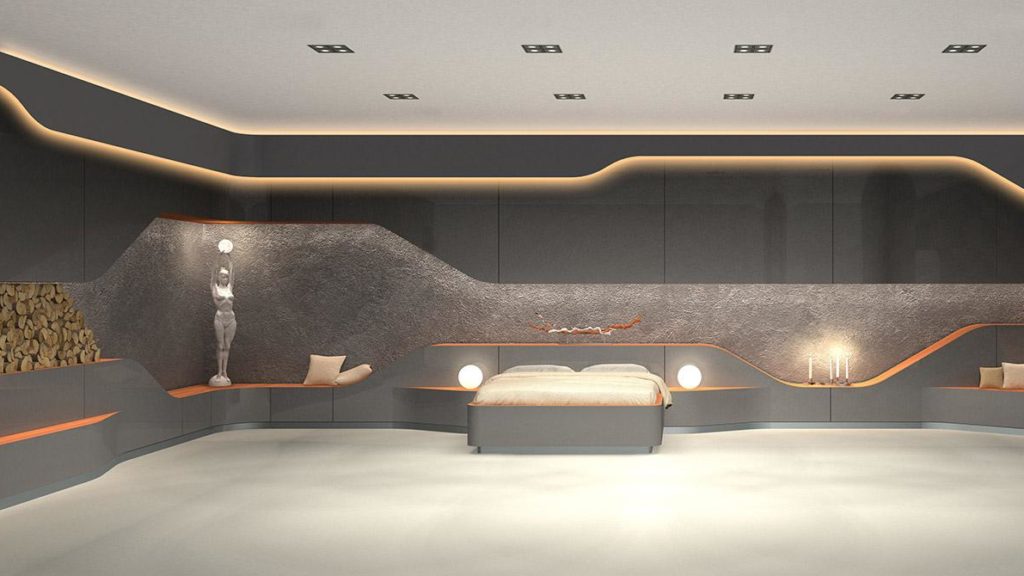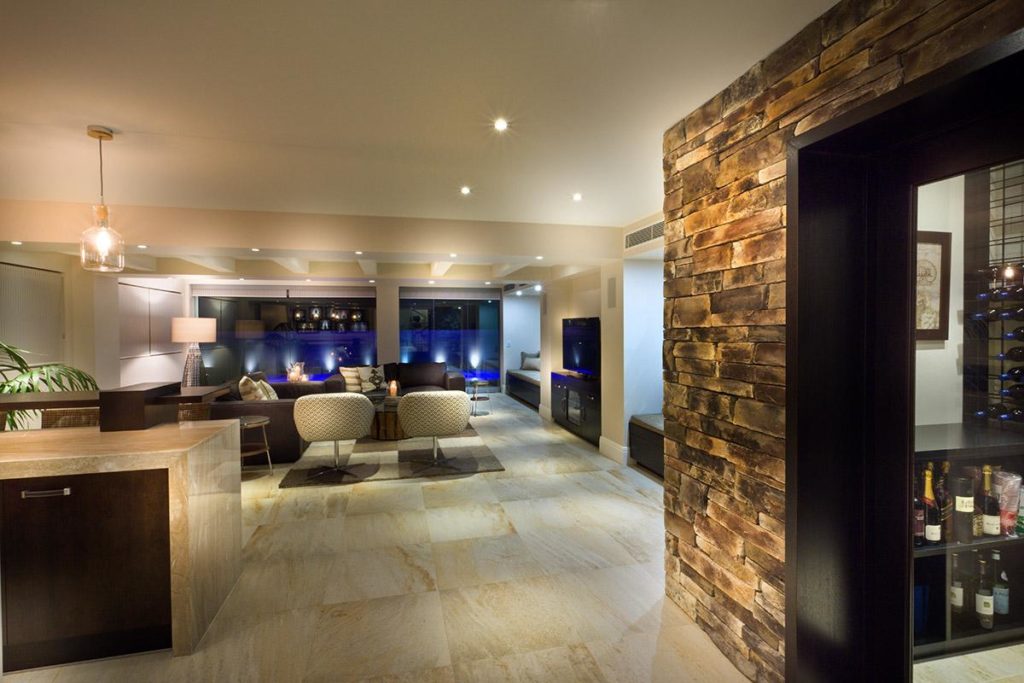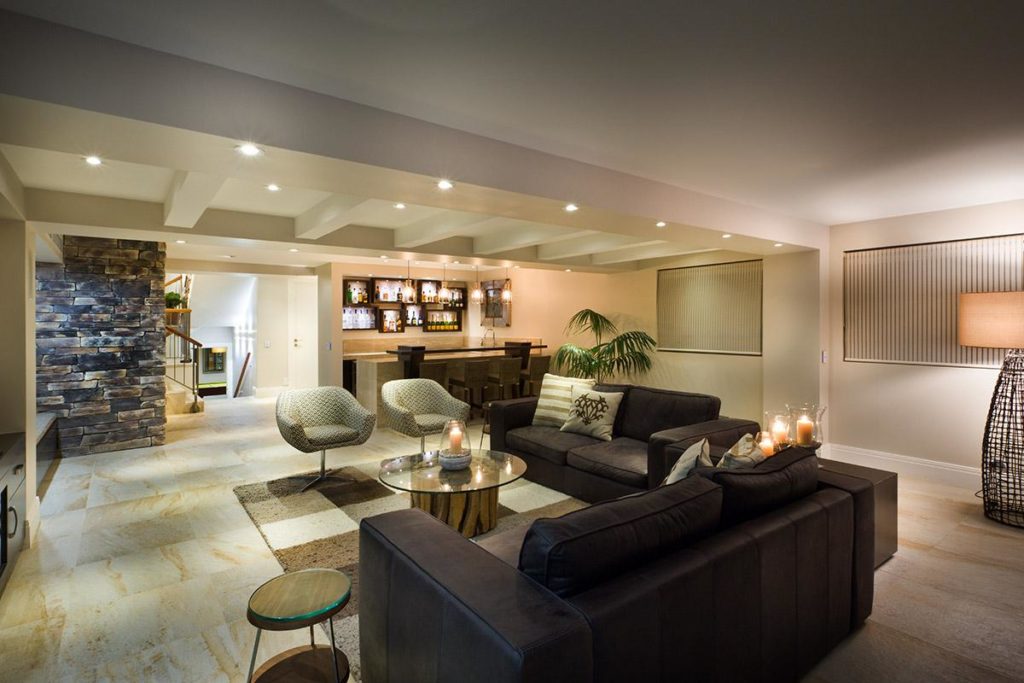London’s luxurious underworld
The rich live in penthouses, the rest in the floors below. This unwritten law applies to all the major cities in the world. But not in London – here, it’s the basement dwellers that set the standard.
Just recently, this smart villa was sold for nearly 30 million euros. Real estate developer Costas Diamantopoulos originally wanted just 28 million for it. But it was the luxurious subterranean world, i.e. the cellar of all things, that drove the price to such dizzying heights!
Secret underworld
In order to understand this paradox, you have to take a closer look at this obviously very special basement. Because it quickly becomes apparent that the three subterranean levels have nothing in common with a traditional cellar.
Basement one is home to a garage with fully automatic platforms that can spit out three cars in rotation. Three bedrooms with en-suite bathrooms are also found on this floor.
It becomes really comfortable one level lower: a Turkish bath, spacious wellness area and a 21-metre-long swimming pool, whose tiled floor can be raised by means of a hydraulic contraption and the room converted into a dance floor. Machine rooms and storerooms are found on the level below.
A total of 800 m² of floor space in the heart of the exclusive Notting Hill district of London – over half of which is underground and pushes the value of the property to astronomical heights. An underworld that’s more of a wonderland.
4,650 mega-cellars beneath London
While this property may be extraordinary in our eyes, it’s the current standard for London’s super-rich. As it is difficult to build more than three storeys high in the trendy districts in central London in particular, since the turn of the millennium, wealthy Londoners are increasingly creating extra living space underground. While others are trying to settle the water with the help of modern technology, the British are heading underground.
In total, 4,650 building permits for additional basement levels alone were issued in seven inner city districts over the past ten years. These are the findings of a recent study by Roger Burrows, professor at the Architecture Faculty of the University of Newcastle. You could safely describe 112 of the developments as “mega-projects” like that of Costas Diemantopoulos. They involve at least three additional floors being excavated below the existing floor plan of the building.
What are iceberg houses?
The result is that many properties appear almost minimalist above ground and only reveal their true scale underground. It’s for this reason that London’s subterranean worlds have long been described as “iceberg homes”.
This evident figure of speech is currently being supplemented by another, however: the increase in burrowing is producing a kind of ice age within the London elite: neighbourhood quarrels are par for the course wherever these iceberg houses are developed.
A really large project involving the creation of three basement levels can generate 1,500 truckloads of excavated material.
Stephen Merritt, cellar professional
The contractors use noisy conveyors to transport the debris and earth from the basements of the building sites to the road. “A really large project involving the creation of three basement levels can generate 1,500 truck-loads of excavated material,” Stephen Merritt estimates. He’s the boss of “London Basement”, the largest specialist contractor for complex cellar extensions in the city.
And he understands the annoyance of the other residents: “The trucks rumble through the narrow streets of the city’s poshest districts. So it’s no wonder that the neighbours are disparaging of iceberg houses.”
Despite this, Merritt has detected another trend: this digging fever spreads like a virus in some streets: “We developed a house in a road in Chelsea. When the cellar was finished and the customer showed it off to his neighbours, a few of them suddenly wanted a new cellar too,” he says.
Pressure to act now?
And so, the digging continues apace – in fact, the number of projects has actually increased over the past few months. The reason: people are afraid the golden age will soon come to an end, because politicians are starting to pay closer attention. And since a house from the 19th century in the affluent Kensington district, right next door to Kensington Palace, where William, Kate and their three royal youngsters George, Charlotte and Louis reside, collapsed during a cellar development, planning permission is being issued less and less frequently.
But as long as it makes financial sense to hollow out London’s underworld, millionaires and building contractors will do whatever they can to keep digging. And according to expert Merrit, the financial argument is very persuasive: “In the good districts, a square metre of floor space costs 20,000 euros and more. If someone extends their basement for 5,000 euros a square metre, they get more living space for comparatively little cost.”
In the good districts, a square metre of floor space costs 20,000 euros and more. If someone extends his basement for 5,000 euros a square metre, he gets more living space for comparatively little cost.
Stephen Merritt, master builder to the super-rich
And if this underworld is luxuriously fitted out too, the price of the property goes further through the roof with every square metre of basement. No wonder then that Roman Abramovich got in on the act from day one: the Russian oligarch bought a villa in Kensington Palace Gardens ten years ago. He filled in the pool and built a new spa area in a vaulted cellar beneath it. In the Victorian style, of course, including steam room, sauna and changing rooms.
It’s rumoured that he later set up a golf course in his personal underworld. But in his eyes, that’s presumably nothing more than a slightly bigger cellar room.
Summary: When it comes to status symbols, these “iceberg houses” have long since superseded penthouses in the British capital. Anyone who really wants to be a player in London’s high society must relocate their luxury abode below ground.
Text: Johannes Stühlinger
Translation: Rosemary Bridger-Lippe
Photos: Gettyimages



